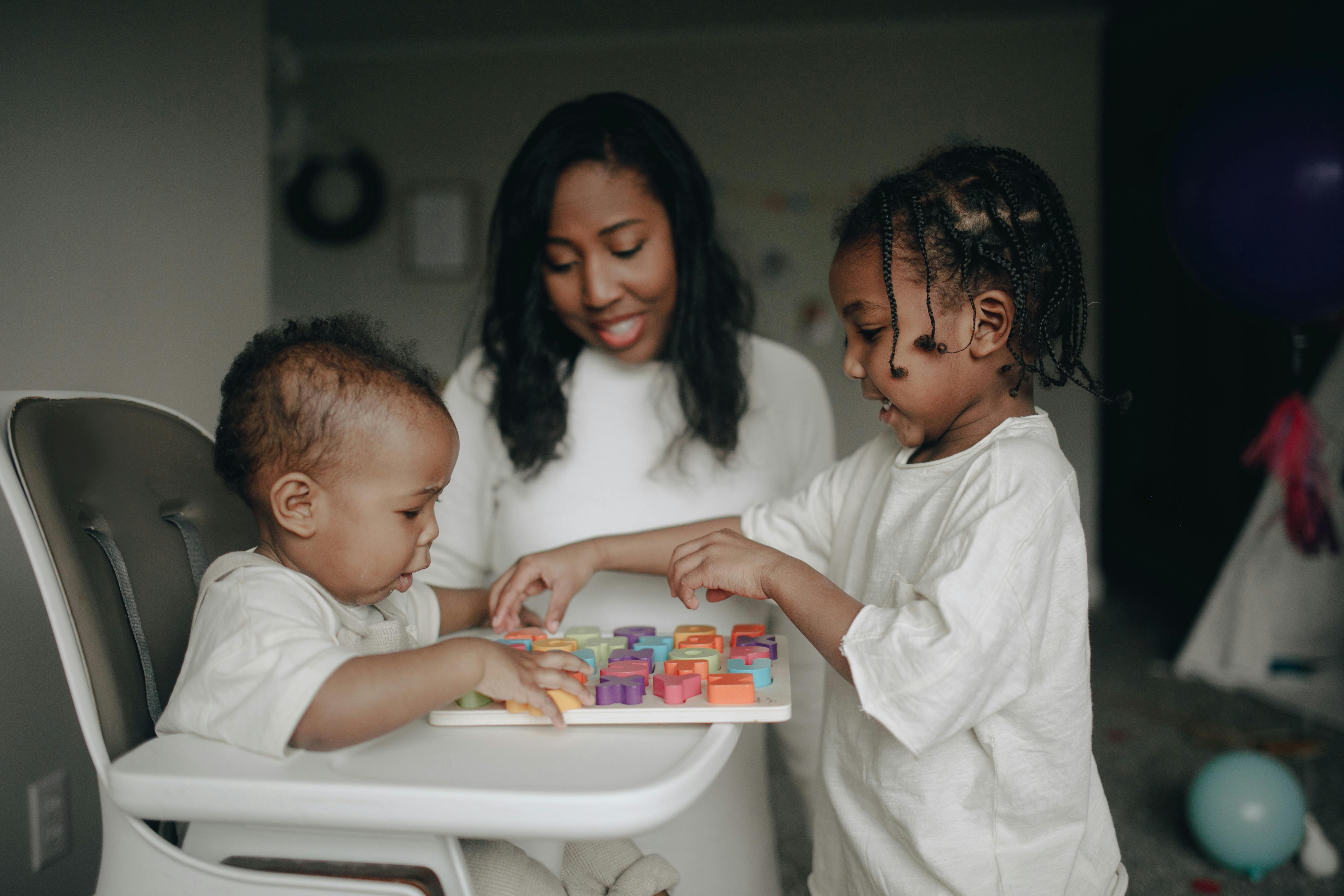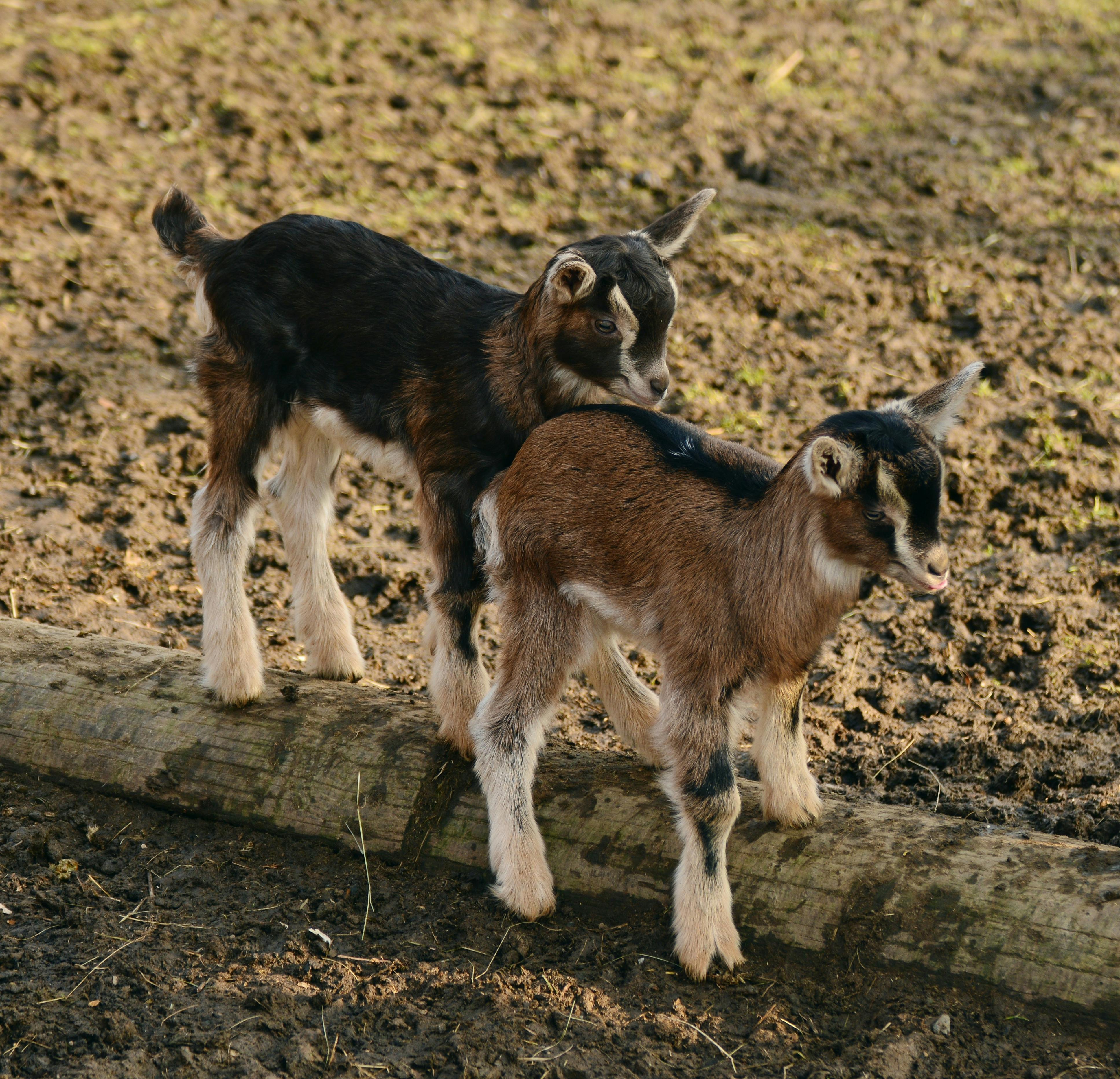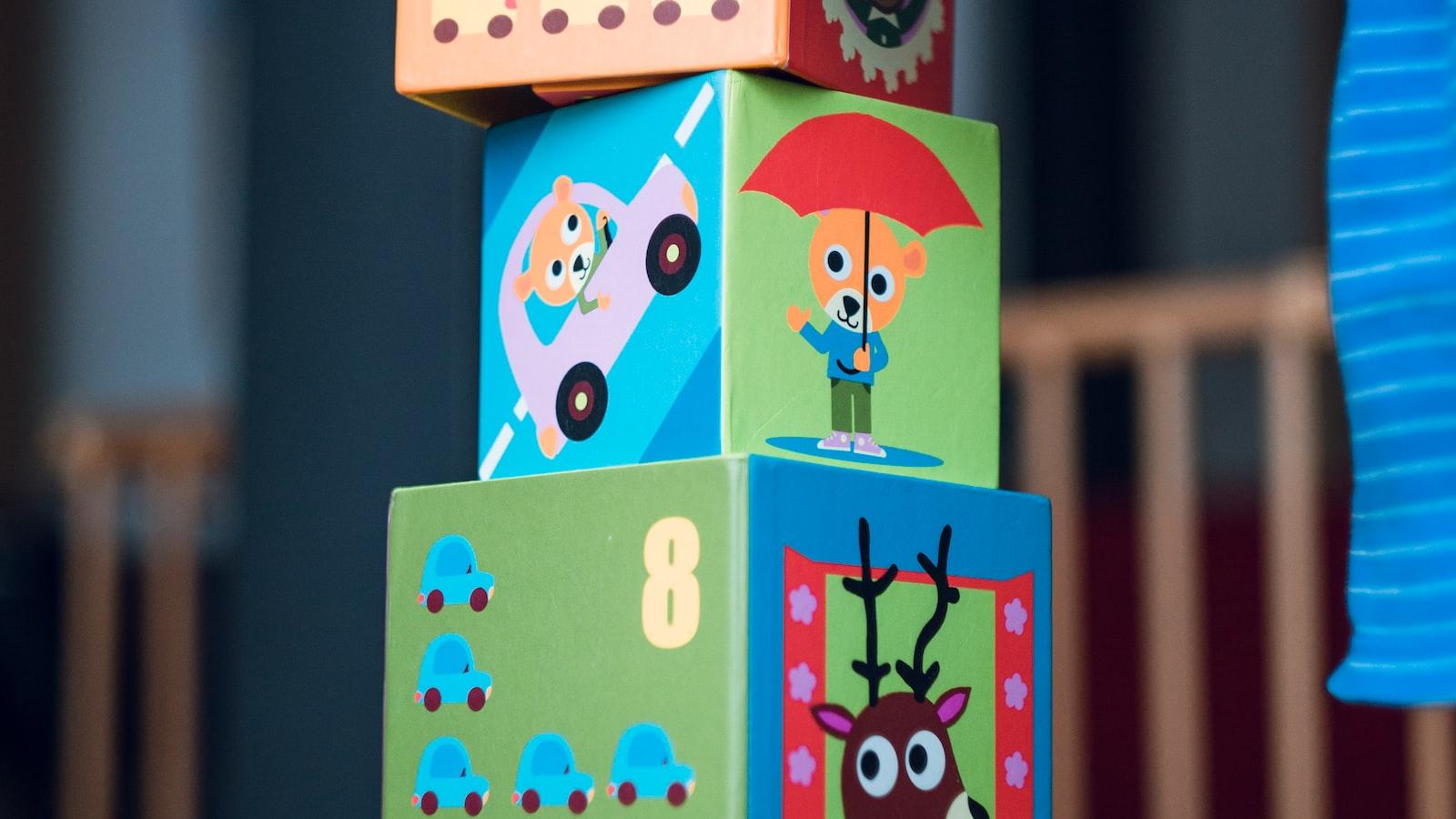Safety
Safety should be the top priority when setting up heat lamps for baby goats. The heat lamp should be mounted securely to the wall or a stand that can support its weight. It should be placed out of reach of the goats, and any cords should be well hidden and secured so that they cannot chew on them. Electrical safety must also be taken into consideration. Heat lamps must be plugged into an outlet with a ground fault circuit interrupter (GFCI) to prevent electric shocks.
Temperature
The temperature in the barn must also be monitored to ensure that it is not too hot or too cold for the baby goats. If it is too cold, they may need additional sources of heat such as heat lamps. A good rule of thumb is to set the temperature between 65-75°F (18-24°C). Pay attention to how your goats are acting; if they are shivering or huddling together, then it may be time to add more sources of heat in order to keep them warm and comfortable.
Type of Lamp
The type of lamp used is also important. Infrared bulbs are most commonly used because they provide direct warmth while also providing a source of light, which can help stimulate growth and development in baby goats. However, other types of lamps such as ceramic emitters may also be used depending on the needs of your particular situation.
Distance from Animals
When setting up a heat lamp for baby goats, it is important to keep in mind how far away from the animals it will need to be placed. The lamp should not be placed too close to them as this could lead to burns or overheating, but it should also not be placed too far away from them as this could result in inadequate heating and discomfort for the goats. Generally speaking, a distance of about three feet (one meter) is adequate.
Duration
Finally, consider how long you will need to use the heat lamps for your baby goats. In general, young animals will need supplemental heating until they are weaned and have established their own body temperature regulation system. This typically takes about three months after birth but can vary depending on breed or other factors such as environmental conditions in your area.
Different Types of Heat Lamps Suitable for Baby Goats
Heat lamps are a necessary part of providing proper care for baby goats. Heat lamps provide warmth and comfort to newborns and can help the animals stay healthy. There are several types of heat lamps available, and each one is designed to meet the specific needs of the goats. Here is a look at some of the most common types of heat lamps used for baby goats:
Infrared Heat Lamps: Infrared heat lamps are the most commonly used type of heat lamp for baby goats. These lamps use infrared radiation to generate heat, providing a comfortable environment for newborns. Infrared heat lamps are particularly effective in cold climates, as they can provide adequate warmth even when temperatures dip below freezing.
Ceramic Heat Emitters: Ceramic heat emitters are another popular type of heat lamp used for baby goats. Unlike infrared heat lamps, ceramic heat emitters do not produce visible light, but rather emit an invisible infrared radiation that warms up the area around the lamp. This type of lamp is ideal for keeping newborns warm without having to worry about light disturbing them during the night.
Halogen Heat Lamps: Halogen heat lamps use halogen gas to generate light and warmth in an enclosed area. These types of lamps produce intense light that can be very bright and uncomfortable if placed too close to newborns, so it is important to place them at a safe distance from the animals. Halogen lamps are often used in combination with other types of lighting systems to provide adequate warmth and illumination in large areas with multiple goat enclosures.
Incandescent Heat Lamps: Incandescent heat lamps use a filament made from tungsten wire which produces light when heated by an electric current. These types of lights generate plenty of warmth without emitting any visible light, making them ideal for providing comfort to newborns without disturbing their sleep patterns. Incandescent lights should be kept at least six feet away from goat enclosures due to their intense brightness and potential fire hazard if placed too close to flammable materials.
Choosing the right type of heat lamp for your baby goats is essential to ensure their health and safety. Each type has its own advantages and disadvantages, so it’s important to research all your options before making a decision on which one is best suited for your needs.
Safety Tips When Using Heat Lamps for Baby Goats
Using heat lamps for baby goats is a great way to keep them warm and protected during the colder months. However, it is important to take certain safety precautions when using heat lamps. Here are some tips to help you ensure your baby goats are safe when using heat lamps:
Check the Watts
When selecting a heat lamp, make sure that it has the appropriate wattage for the size of your goat’s pen. Too much wattage can lead to excessive heat and could start a fire. Make sure to select a lamp with enough wattage to keep your goat warm without putting them in danger.
Securely Mount the Lamp
It is essential to securely mount the heat lamp so that it cannot easily be knocked over by your baby goats. If possible, mount the lamp on the side of a wall or other solid structure, away from anything flammable. Make sure that whatever you use to mount the lamp is secure and will not move easily.
Keep Away from Water Sources
When setting up your heat lamp, make sure that it is kept away from any water sources, such as water troughs or buckets. Not only can this be a fire hazard but it can also cause electric shock if your goat comes into contact with the water and the heat lamp at the same time.
Check Regularly
Make sure to check on your baby goats regularly while they are using their heat lamps. Look for signs of overheating or distress and adjust as necessary. In addition, check on the lamps themselves periodically to make sure they are securely mounted and not malfunctioning in any way.
Following these tips will help you ensure that your baby goats stay safe when using their heat lamps. Remember, safety should always come first!

Recommended Temperatures When Using Heat Lamps for Baby Goats
Heat lamps are an essential tool for raising baby goats in colder climates. They provide the necessary warmth for the young animals, allowing them to thrive and develop properly. However, it is important to use heat lamps responsibly and ensure that temperatures remain within a safe range. Here are some recommended temperatures when using heat lamps for baby goats:
For newborns and very young goats, a temperature of 95-100 degrees Fahrenheit (35-38 degrees Celsius) is ideal. This temperature should be maintained while the kid is in the barn or other enclosed area. If the ambient temperature is lower than this, or if there is a risk of drafts, then higher temperatures may be necessary.
Once the goat has reached one month of age, the temperature can be decreased to 85-90 degrees Fahrenheit (29-32 degrees Celsius). This should enable the goat to sleep comfortably without becoming too hot or too cold. If there is still a risk of drafts or low ambient temperatures, then higher temperatures may be required.
At two months of age, the temperature can then be reduced further to 75-80 degrees Fahrenheit (24-27 degrees Celsius). Once again, if there is any risk of drafts or low ambient temperatures then higher temperatures may still be necessary.
It is important to remember that these are just guidelines and that each individual situation will vary depending on climatic conditions and other factors. It is also important to monitor the goat’s health and behaviour to ensure that they remain comfortable at all times.
The Dangers of Overheating for Baby Goats with Heat Lamps
The use of heat lamps to keep baby goats warm is a common practice in many farms and goat owners. While heat lamps can provide much needed warmth in cold weather, it is important to be aware of the dangers of overheating. When baby goats are exposed to too much heat, it can lead to serious health issues and even death.
One potential danger of overheating is dehydration. Baby goats can easily become dehydrated when exposed to excessive heat, as their bodies are not able to regulate their temperature as well as adult goats. Dehydration can lead to a variety of health issues including diarrhea, vomiting, and weakness. If left untreated, dehydration can be fatal.
Another potential danger of overheating is heat stroke. Heat stroke occurs when the body’s temperature rises to dangerous levels due to being exposed to too much heat for too long. Symptoms of heat stroke include excessive panting, drooling, and lethargy. If not treated quickly, heat stroke can cause permanent organ damage or even death.
It is important to be aware of the dangers of overheating when using heat lamps on baby goats. It is recommended that the temperature in the area where the goat is located should not exceed 85 degrees Fahrenheit (29 degrees Celsius). Monitor the temperature regularly and make sure that it does not exceed this level. Additionally, check on your baby goats frequently throughout the day and make sure they are comfortable and alert. If you notice any signs of dehydration or heat stroke, seek veterinary care immediately.
By following these guidelines, you can help ensure that your baby goats stay safe and healthy during cold weather months with the use of a heat lamp!
Frequency of Replacing or Upgrading Heat Lamps Used For Baby Goats
Heat lamps are essential for baby goat owners, providing them with the warmth they need to stay healthy and thrive. Heat lamps also offer an extra source of light that can help improve the quality of sleep and reduce stress levels in baby goats. However, heat lamps can become worn out over time and need to be replaced or upgraded periodically. The frequency of replacing or upgrading heat lamps used for baby goats will depend on several factors.
The age and size of the baby goats will determine how long a heat lamp should be used before needing to be replaced or upgraded. Generally, younger and smaller goats require more frequent replacement or upgrades as they grow faster than older, larger goats. Additionally, depending on the environment where the baby goats are housed, more frequent replacement or upgrades may be necessary to ensure adequate warmth is provided.
Another factor to consider when determining the frequency of replacing or upgrading heat lamps for baby goats is the type of lamp being used. Infrared bulbs tend to last longer than other types of bulbs, so they may not need to be replaced as often. However, other types of bulbs may require more frequent replacement due to their shorter lifespan.
Finally, it is important to keep an eye on the condition of the heat lamps being used for baby goats over time and replace them when necessary. Bulbs can become loose over time or become damaged due to improper handling, so it is important to check them regularly and replace them as needed. Doing so will ensure that your baby goats are receiving adequate warmth and light for optimal health and well-being.

Conclusion
Baby goats need heat lamps for the first few weeks of their life, as they are unable to regulate their body temperature on their own. A healthy baby goat will require a heat lamp for up to 4-6 weeks, depending on when they were born and the weather conditions outside. It is important to ensure that the baby goat has access to a heat source, preferably in the form of a lamp, to ensure that it stays warm and healthy. The temperature should be monitored regularly to make sure it is not too hot or cold. Heat lamps are essential for keeping newborn goats safe and healthy during their first few weeks of life.
Overall, baby goats need heat lamps during their first few weeks of life in order to stay warm and healthy. It is important to monitor the temperature regularly and adjust it as needed. By providing proper care, newborn goats can grow into strong adults capable of thriving in any environment.




